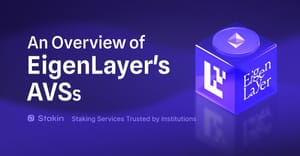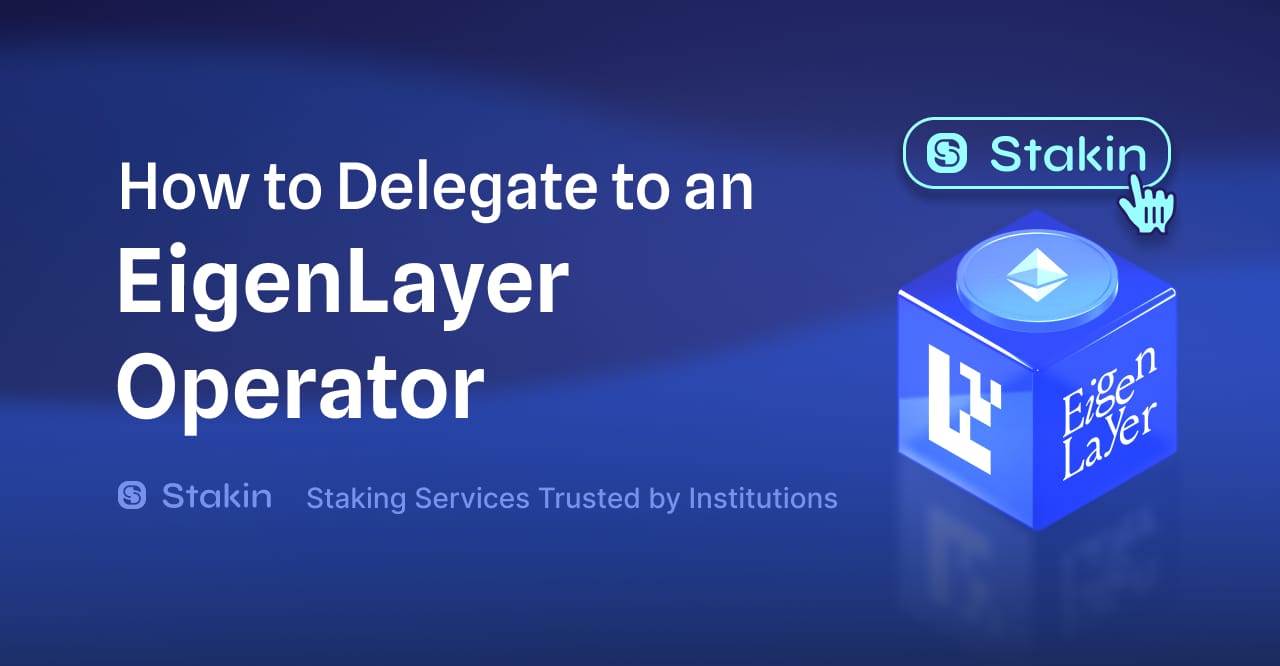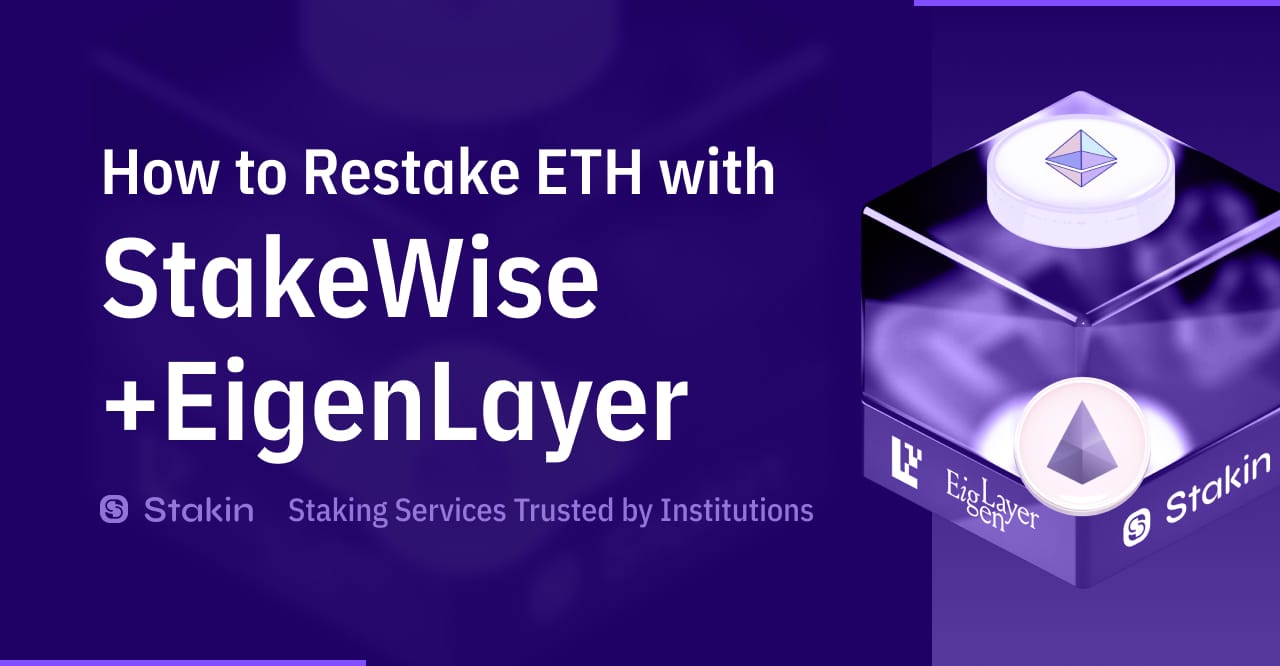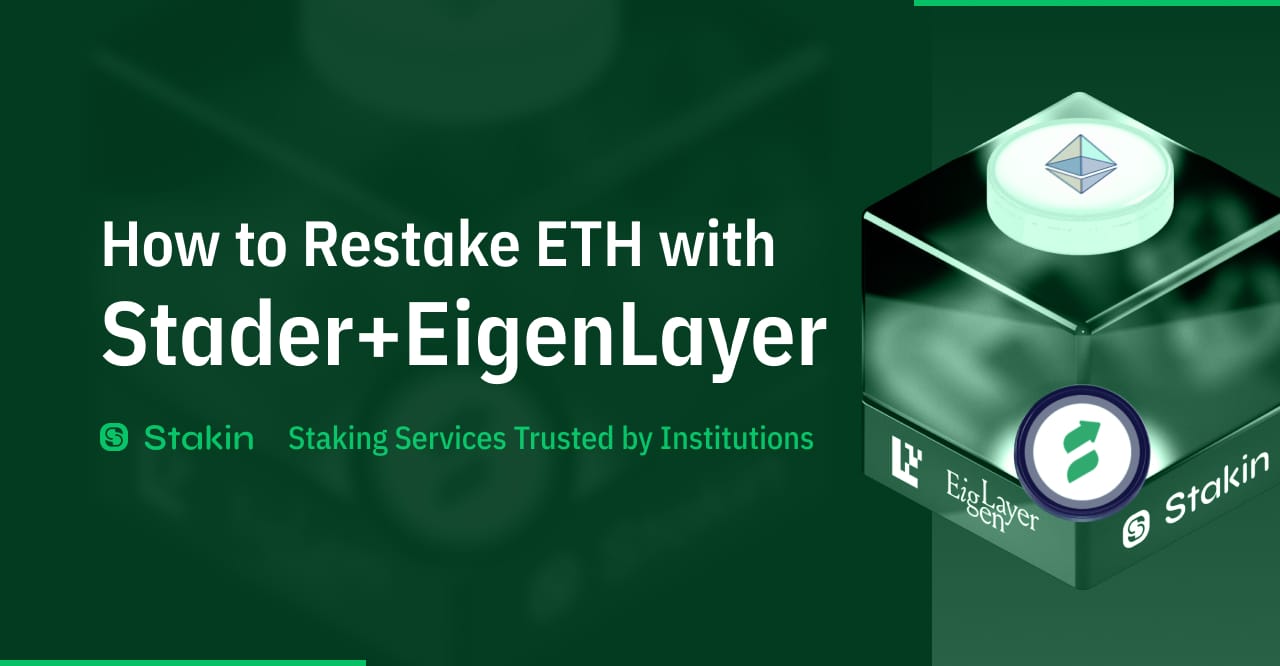EigenLayer enables Ethereum stakers and holders of various Liquid Staking Tokens (LSTs) like stETH, osETH, ETHx, and more to engage in a novel form of restaking, thereby amplifying the security and functionality of various blockchain components, including consensus protocols, data layers, sequencers, and oracle networks. As of March 31, 2024, over $12.5B in TVL has been achieved on the EigenLayer platform, making EigenLayer one of the most dominant players in the Ethereum restaking landscape.
The restaking framework comprises three key elements: restakers, operators, and Actively Validated Services (AVSs). The emergence of EigenLayer has had its biggest impact on AVSs.
What are Actively Validated Services?
Actively Validated Services (AVS) are blockchain-based applications outside the Ethereum Virtual Machine (EVM). They include L2 chains, data availability layers, sequencers, dApps, cross-chain bridges, and virtual machines, offering diverse utilities to the blockchain ecosystem.
You may also be interested in:
AVSs use decentralized consensus mechanisms for transaction validation, all of which handle consensus independently rather than relying on Ethereum’s consensus layer.

Before EigenLayer, AVSs had to establish their consensus mechanisms, which imposed various vulnerabilities due to the smaller size of validator pools and stakes compared to larger networks like Ethereum. This made them susceptible to attacks and exploits.
With EigenLayer, AVSs can leverage Ethereum's security and decentralization capabilities, bypassing the need to set up independent validation mechanisms.
The most popular upcoming AVS on EigenLayer
The EigenLayer AVS ecosystem is constantly expanding. Our research team has collected insights on the most promising EigenLayer AVSs which you will find below.
Some projects are still too early, while others don’t have enough information or recent updates to make it on this list.
Here is an overview of some of the most popular upcoming AVSs.
EigenDA - EigenLayer's Data Availability layer
EigenDA is the first and most renowned AVS to be launched on EigenLayer, a secure, high-throughput, and decentralized data availability (DA) service. EigenLayer retakers can choose to delegate their stake toward node operators operating on EigenDA, such as Stakin. Rollups leveraging EigenDA benefit from significantly lower transaction costs and higher throughput.
As per EigenDA’s protocol documentation, the protocol is based on three components:
- Operators
- The Disperser (untrusted)
- Retrievers (untrusted)
Operators, such as Stakin, are third parties running the EigenDA node software registered in EigenLayer with stake delegated to them.
Disperser is an untrusted service hosted by EigenLabs which is responsible for interfacing between EigenDA clients, operators, and contracts.
Retriever is a service that queries EigenDA operators for blob chunks, verifies that blob chunks are accurate, and reconstructs the original blob for the user.
AltLayer - A Repledging rollup
Many app-specific rollups do not have an ecosystem as mature as that of popular general-purpose rollups. As a result, there may not be enough ecosystem participants who are sufficiently incentivized to validate the network.
In addition, Ethereum (compared to other blockchain alternatives) does not feature a very fast settlement time, as it takes about 13 minutes for a transaction to be finalized. This poses a challenge for app-specific rollups that are designed to serve latency-sensitive applications such as games and social apps, which often end up relying on the promise provided by the sequencer.
AltLayer is an open and decentralized protocol for rollups, which makes the launch of native and restaked rollups easy with Optimistic and zk rollup tech.
Altlayer introduces the novel concept of Restaked rollups, which combines the ease of spinning up rollups using popular rollup stacks, with the power of EigenLayer's restaking mechanism.
With Altlayer, restaked rollups combines the ease of spinning up rollups using rollup stacks such as OP Stack, Arbitrum Orbit, ZKStack by ZKSync, with the power of EigenLayer's restaking mechanism, to bootstrap network security and build a decentralized network.
Ethos - Bringing Ethereum’s security to Cosmos
Ethos intends to extend EigenLayer’s ability to secure networks well beyond the Ethereum ecosystem, including applications emerging from the Cosmos ecosystem. Ethos will enable Cosmos chains to bootstrap their L1 using EigenLayer’s existing trust network.
The Ethos ecosystem comprises 3 layers:
- The AVS contract deployed on EigenLayer enables secure delegation of restaked ETH to Ethos Guardians
- The Guardian chain that uses the restaked ETH to co-validate or delegate to Cosmos L1s
- Ethos-powered chains that leverage the Guardians to easily bootstrap a decentralized trust network and/or increase their economic security.
Lagrange - Verifiable computation over historical storage, receipt, or transaction data from smart contracts at scale
Lagrange’s parallel ZK coprocessor is designed to enable developers to execute intensive off-chain computation and prove the result of the computation to smart contracts on-chain.
Lagrange’s hyper-parallel prover is designed to generate ZK proofs for any distributed or parallelizable computational model. In effect, Lagrange Labs is building the glue to help securely scale zero-knowledge proof-based interoperability.
Lagrange’s network is currently the first ZK coprocessor to have more than $2 billion in restaking delegations commitments.
Drosera - Core security service for EigenLayer
Since 2014, the Web3 industry has experienced around $80B worth of exploit losses, a staggering amount.
Despite the various improvements and security innovations, the security infrastructure that enables the promise of decentralized finance is incomplete in several ways - extensive centralization, cost-prohibitive design, and minimum regard for composability.
Drosera is an Ethereum-native solution enabling protocols and their communities to outsource application security infrastructure to the Ethereum operators that are already maintaining Ethereum consensus.
In essence, Drosera is a security marketplace where protocols can set a so-called Trap that determines whether an emergency response should be triggered. The Trap is a smart contract that defines emergency conditions but is never deployed on-chain.
As per Drosera’s protocol documentation, the protocol will feature two key components:
- Traps - Smart contracts are responsible for gathering on-chain data and performing analyses of the collected data. Protocols can use Traps to monitor their on-chain state and signal the execution of an on-chain response function.
- Operators - Decentralized nodes responsible for executing Traps and performing on-chain response actions. Operators can opt into a Trap to gain permission to execute it and earn rewards.
Blockless Network - Network Neutral Applications at unprecedented speed
Decentralized applications are often limited by the type of workload the underlying blockchain can support and the amount of work the public network can process at a given time. This hinders their ability to efficiently manage tasks like intensive computations, real-time processing, and collaboration.
Blockless is the infrastructure platform to launch, integrate, and secure so-called Network Neutral Applications (nnApps) — the next generation of decentralized applications compatible with all blockchain networks, but free from their limitations, such as latency, cost, and smart contract capabilities.
Blockless’s Network Neutral Applications will be able to easily retain full-stack decentralization and security while having a much broader set of capabilities for developers and their users. In this way, Blockless’s infrastructure framework, which enables Network Neutral Applications, will be very similar to Tendermint’s Cosmos Vision of interoperable sovereign blockchains.
Hyperlane - Permissionless interoperabilty
Research on blockchain scalability has produced apparent blockspace kingdoms (from Coinbase and Zora, to Circle) that reflect increasingly divergent values.
In response, developers either clone their dApp on every chain, augment it to function across chain boundaries, or spin up a separate chain. Cloning is simple and allows a trusted brand to expand its reach. However, network effects cannot be cloned, and therefore, Web3 developers must constantly overcome the so-called cold-start problem. Over $2.6B+ lost in exploits and complicated user experience also make bridging a complicated affair and borderline gambling.
As an alternative, modular blockchain frameworks offer a spectrum of tradeoffs at each layer, leveraging the best available tech while avoiding maximalism.
Hyperlane is the first universal and permissionless interoperability layer built for the modular blockchain stack. Anyone can permissionlessly deploy Hyperlane to any blockchain environment, whether a Layer 1, rollup, or app chain, allowing that chain to communicate seamlessly with any other chain on which Hyperlane has been deployed.
Espresso - A decentralized sorter
L2 networks have been extensively criticized due to their lack of sufficient decentralization. Rollup teams develop and maintain all components as a singular package - not as modular systems that could easily be swapped or upgraded. Rollups operate in their silos, introducing all the same issues of interoperability that L1s have experienced.
Espresso is a shared sequencing marketplace and finality gadget connecting L2 scaling solutions. The Espresso Sequencer runs on HotShot, a consensus protocol that prioritizes high throughput and fast pre-confirmations limited only by network bandwidth.
Gibraltar is Espresso's fourth testnet and the first shared sequencer network run with external node operators. This testnet release also sees the Espresso Sequencer supporting four rollup stacks (Arbitrum, Cartesi, Optimism, and Polygon zkEVM) and several collaborations with rollup projects. In the upcoming fifth testnet, Cappuccino, Espresso plans to further decentralize the sequencer by onboarding more entities to run Espresso Sequencer nodes.
Omni - Bridging All Rollups’ Blockchains
One of Ethereum’s greatest challenges is the fragmentation caused by rollups. Ethereum’s users and capital are increasingly split into siloed ecosystems, degrading the global network effects.
As per Omni, fragmentation can manifest itself in several ways:
- Liquidity Split: Assets are distributed across multiple rollups, which can dilute the liquidity and make it more difficult for users to access the full value of the network.
- User Experience: With different rollups offering different features, users may have to navigate complex processes to move assets or data between those rollups, impacting usability.
- Developer Complexity: Building applications that span multiple rollups requires dealing with disparate systems, which can increase development time and costs.
Omni is a low latency interoperability network that connects all Ethereum rollups securely through restaking, uniting all rollups into a cohesive, interoperable network.
Omni contributes to a more unified blockchain ecosystem through:
- Cross-Rollup Communication: Omni allows users and applications to interact across various rollups as a single, cohesive network.
- Unified Liquidity Pools: By facilitating cross-rollup transactions, Omni helps aggregate liquidity, improve capital efficiency, and reduce user slippage.
- Simplified User Journeys: Users can enjoy a smoother experience with the ability to move assets or execute actions across rollups without complex processes or multiple steps.
- Developer-Friendly Platform: Developers can build applications with the confidence that they will work across the entire rollup ecosystem, thanks to Omni's standardized communication protocols.
Conclusion
EigenLayer enhances Ethereum's utility across the blockchain ecosystem. Actively Validated Services (AVSs) involve some complexities around integrating Ethereum, potential operational difficulties from managing advanced blockchain technologies, and the risk of relying heavily on Ethereum's security.
Despite the risks, Actively Validated Services are a substantial advancement in blockchain technology by offering a secure, efficient pathway for applications beyond the Ethereum Virtual Machine (EVM). It will be worth witnessing other ecosystems incorporate restaking protocols and stride towards a more dynamic DeFi future.
This is not an exhaustive list of the most notable AVSs on EigenLayer, as further noteworthy protocols are being launched. EigenLayer is a dynamic ecosystem where plenty of innovation happens as we speak.
If you wish to be added to this list, do not hesitate to contact us. You can also contact us to learn more about Stakin's services for restakers and AVSs.



